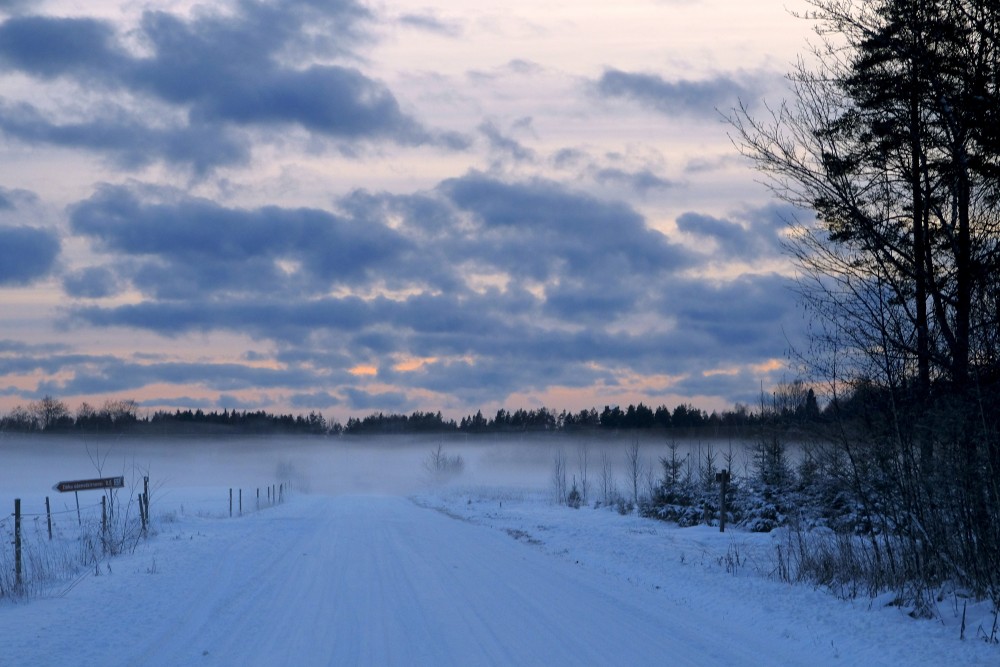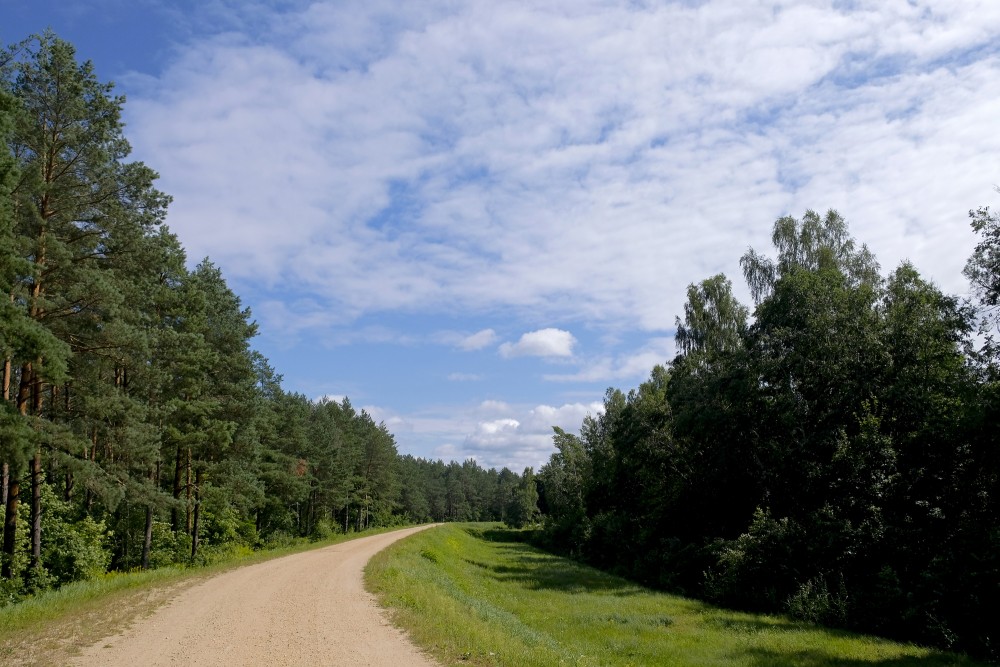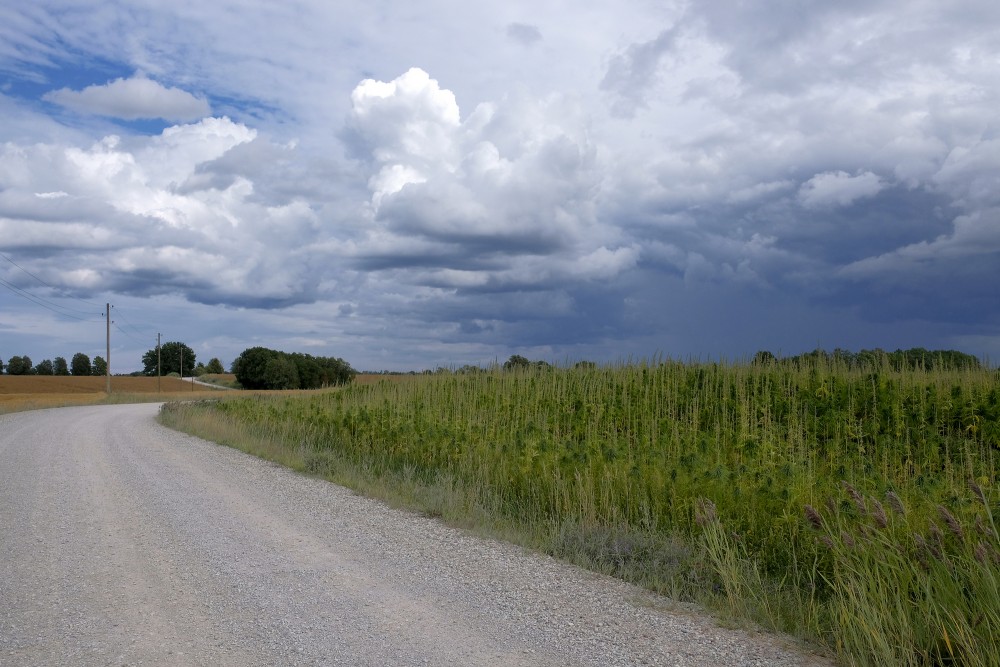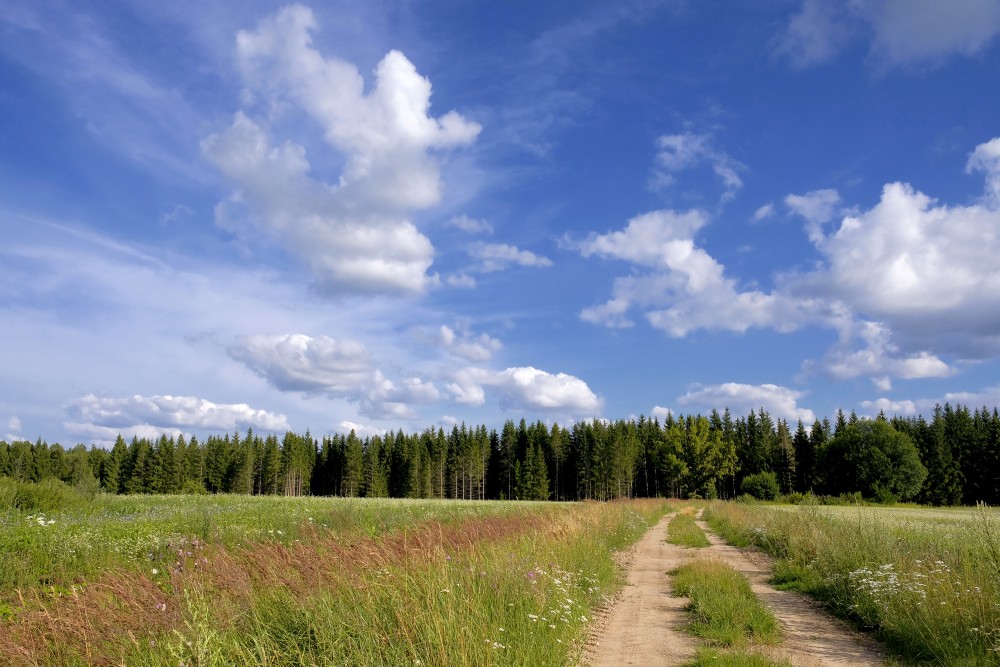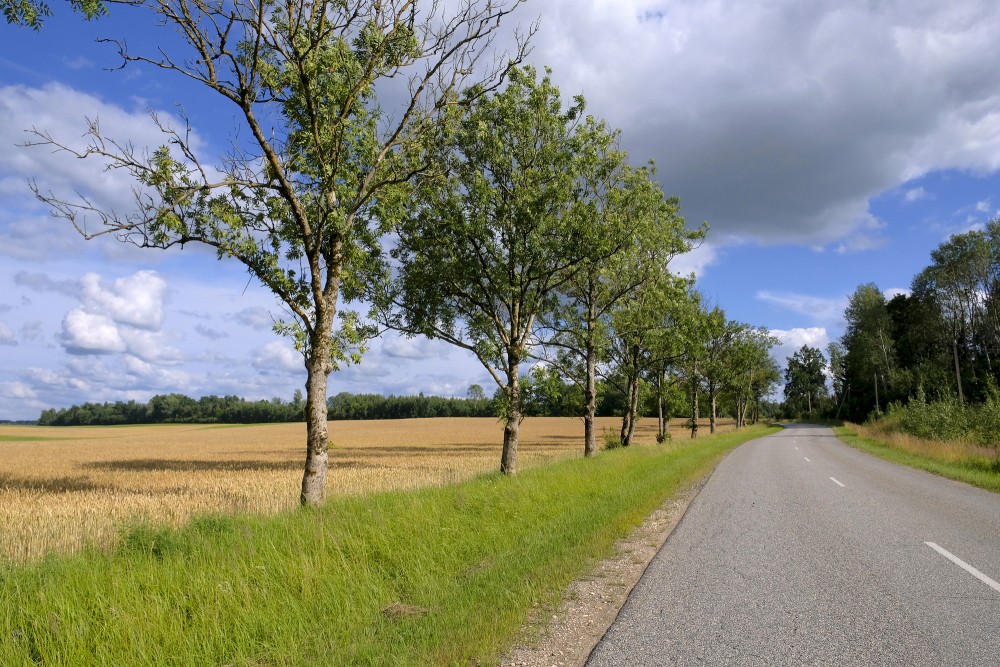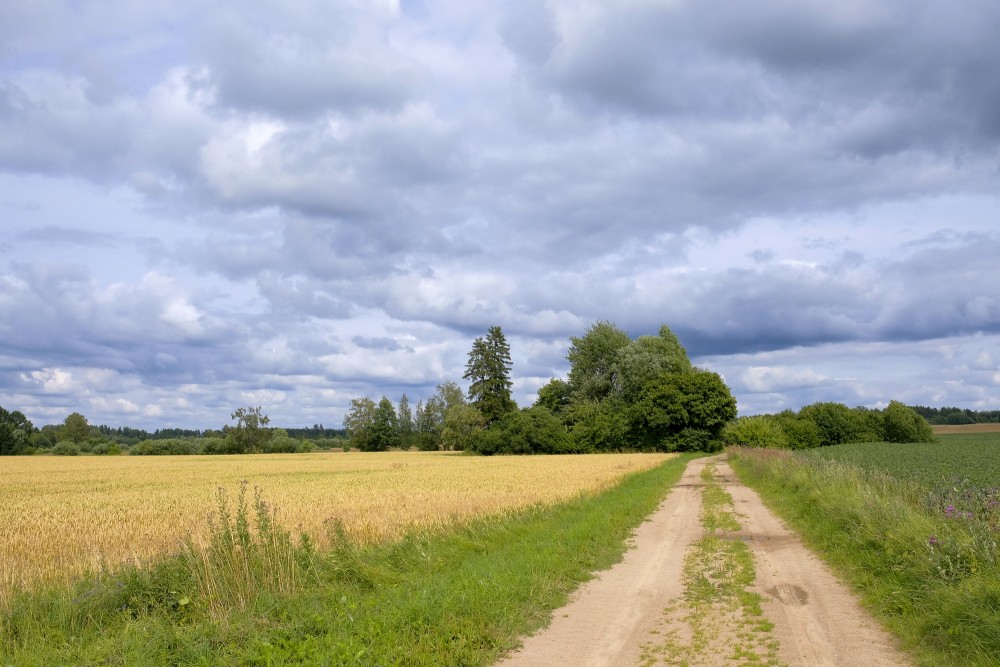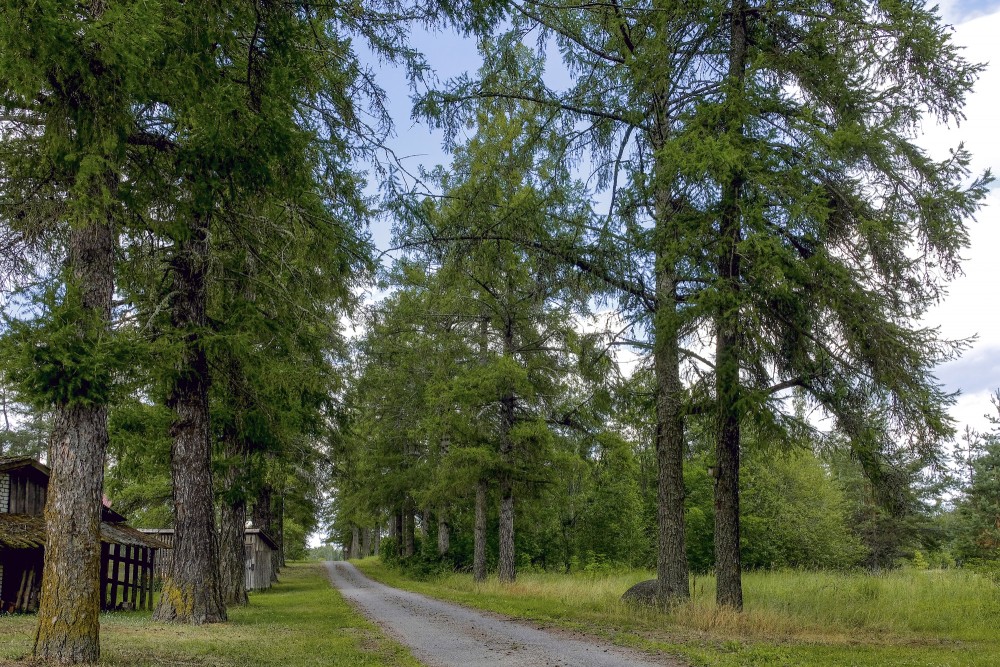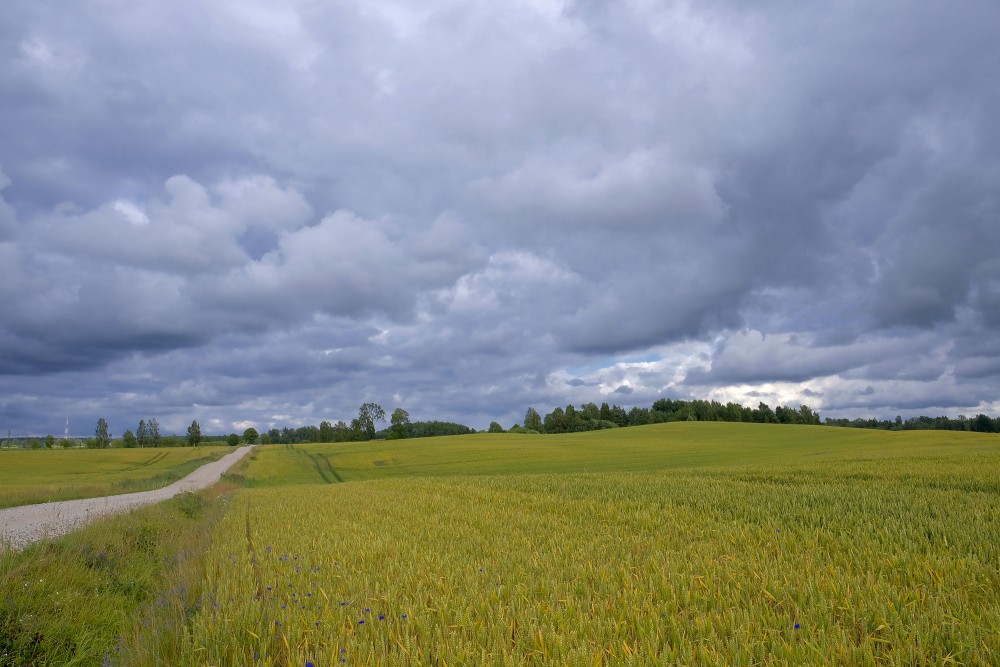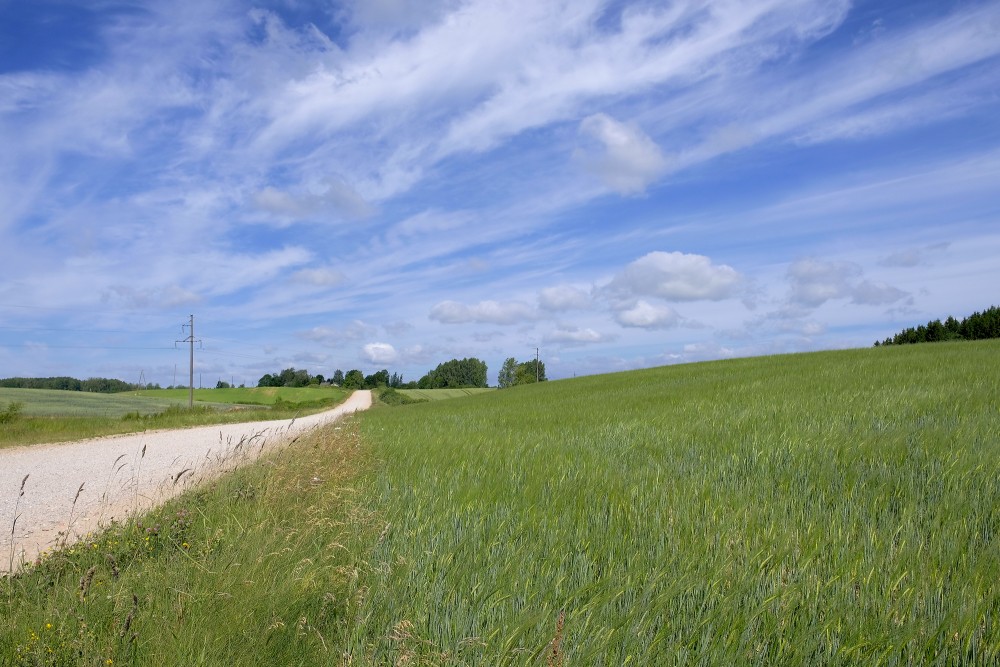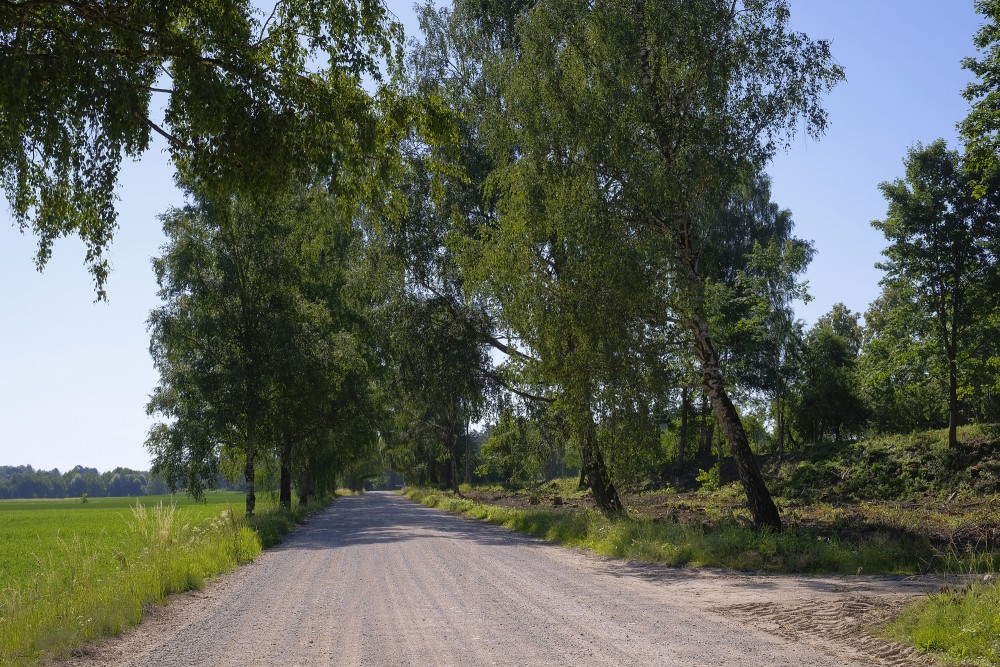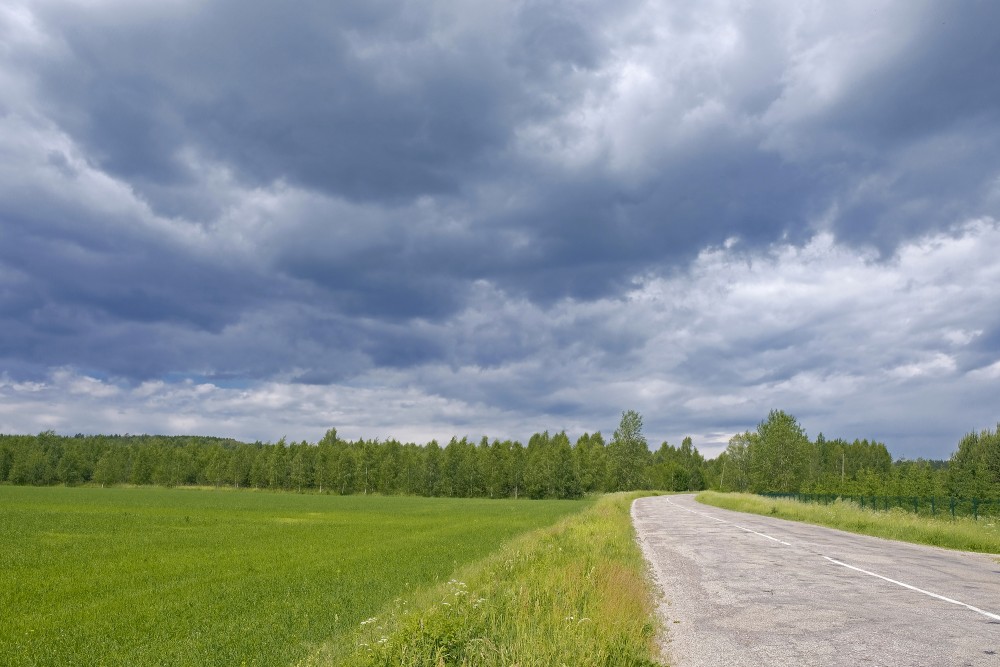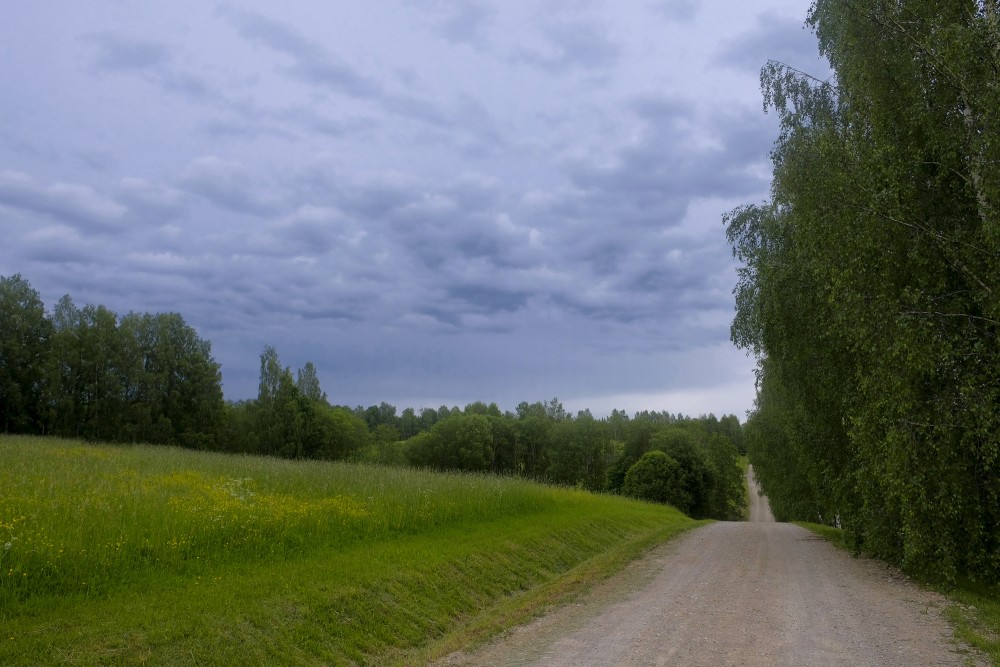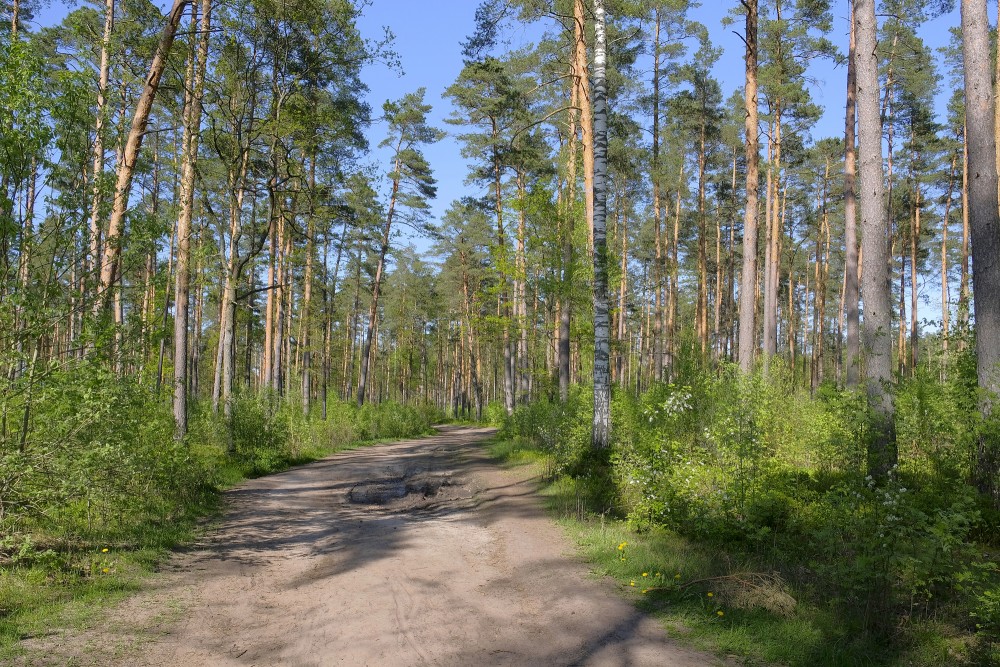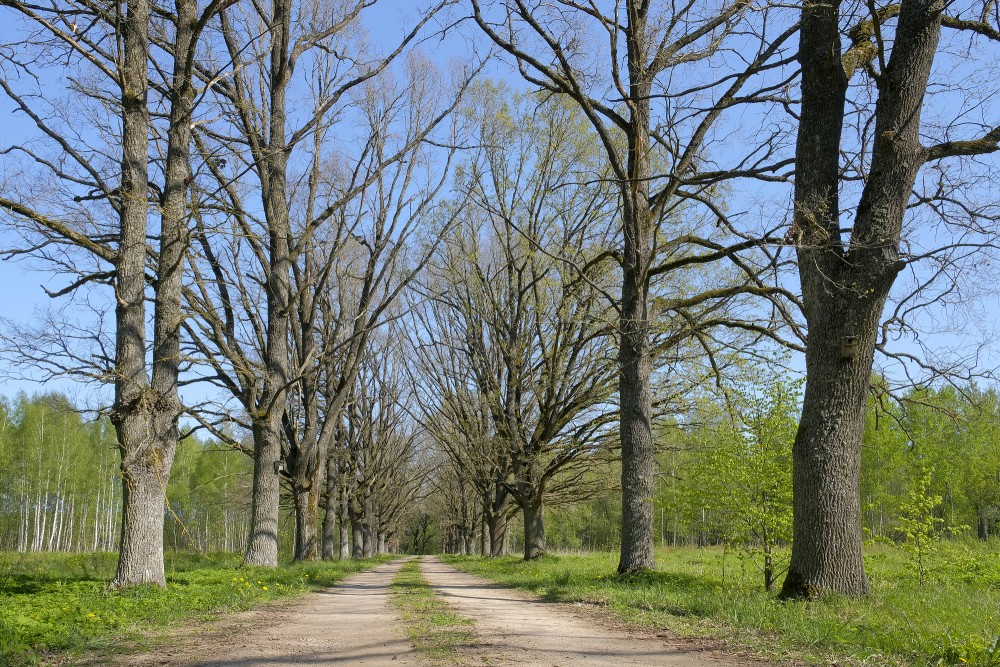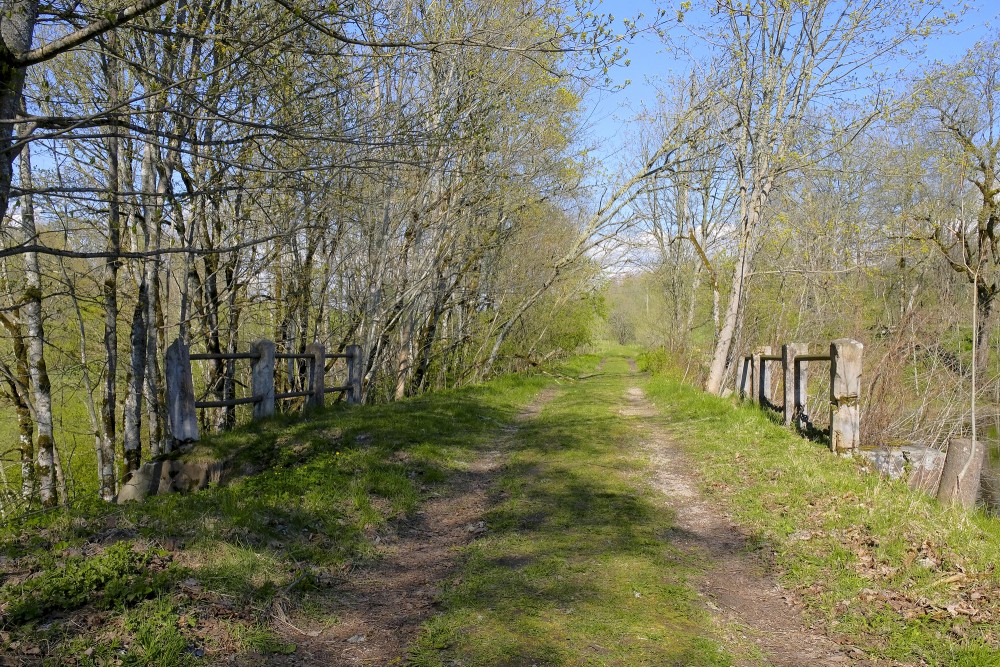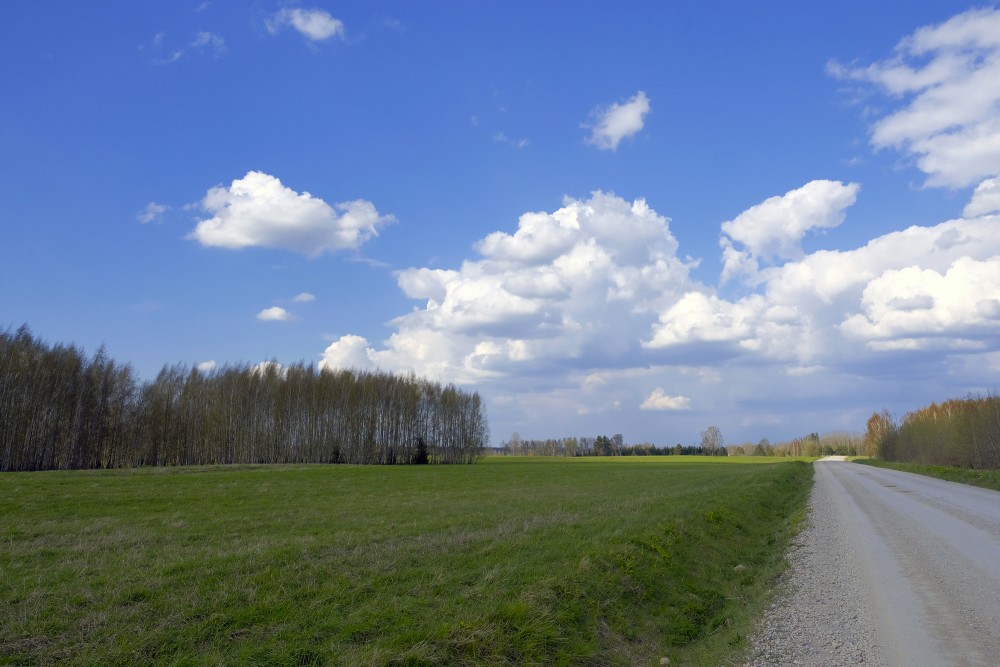Road
A road is a thoroughfare, route, or way on land between two places that has been paved or otherwise improved to allow travel by foot or some form of conveyance, including a motor vehicle, cart, bicycle, or horse.
Roads consist of one or two roadways (British English: carriageways), each with one or more lanes and any associated sidewalks (British English: pavement) and road verges. There is often a bike path. Other names for roads include parkways, avenues, freeways, tollways, interstates, highways, or primary, secondary, and tertiary local roads.
Definitions
Historically many roads were simply recognizable routes without any formal construction or maintenance.
The Organisation for Economic Co-operation and Development (OECD) defines a road as "a line of communication (travelled way) using a stabilized base other than rails or air strips open to public traffic, primarily for the use of road motor vehicles running on their own wheels," which includes "bridges, tunnels, supporting structures, junctions, crossings, interchanges, and toll roads, but not cycle paths."
The Eurostat, ITF and UNECE Glossary for Transport Statistics Illustrated defines a road as a "Line of communication (travelled way) open to public traffic, primarily for the use of road motor vehicles, using a stabilized base other than rails or air strips. [...] Included are paved roads and other roads with a stabilized base, e.g. gravel roads. Roads also cover streets, bridges, tunnels, supporting structures, junctions, crossings and interchanges. Toll roads are also included. Excluded are dedicated cycle lanes."
The 1968 Vienna Convention on Road Traffic defines a road as the entire surface of any way or street open to public traffic.
In urban areas roads may diverge through a city or village and be named as streets, serving a dual function as urban space easement and route. Modern roads are normally smoothed, paved, or otherwise prepared to allow easy travel.
Construction
Road construction requires the creation of an engineered continuous right-of-way or roadbed, overcoming geographic obstacles and having grades low enough to permit vehicle or foot travel, and may be required to meet standards set by law or official guidelines. The process is often begun with the removal of earth and rock by digging or blasting, construction of embankments, bridges and tunnels, and removal of vegetation (this may involve deforestation) and followed by the laying of pavement material. A variety of road building equipment is employed in road building.
After design, approval, planning, legal and environmental considerations have been addressed alignment of the road is set out by a surveyor. The radii and gradient are designed and staked out to best suit the natural ground levels and minimize the amount of cut and fill. Great care is taken to preserve reference Benchmarks
Roads are designed and built for primary use by vehicular and pedestrian traffic. Storm drainage and environmental considerations are a major concern. Erosion and sediment controls are constructed to prevent detrimental effects. Drainage lines are laid with sealed joints in the road easement with runoff coefficients and characteristics adequate for the land zoning and storm water system. Drainage systems must be capable of carrying the ultimate design flow from the upstream catchment with approval for the outfall from the appropriate authority to a watercourse, creek, river or the sea for drainage discharge.
A borrow pit (source for obtaining fill, gravel, and rock) and a water source should be located near or in reasonable distance to the road construction site. Approval from local authorities may be required to draw water or for working (crushing and screening) of materials for construction needs. The topsoil and vegetation is removed from the borrow pit and stockpiled for subsequent rehabilitation of the extraction area. Side slopes in the excavation area not steeper than one vertical to two horizontal for safety reasons.
Old road surfaces, fences, and buildings may need to be removed before construction can begin. Trees in the road construction area may be marked for retention. These protected trees should not have the topsoil within the area of the tree's drip line removed and the area should be kept clear of construction material and equipment. Compensation or replacement may be required if a protected tree is damaged. Much of the vegetation may be mulched and put aside for use during reinstatement. The topsoil is usually stripped and stockpiled nearby for rehabilitation of newly constructed embankments along the road. Stumps and roots are removed and holes filled as required before the earthwork begins. Final rehabilitation after road construction is completed will include seeding, planting, watering and other activities to reinstate the area to be consistent with the untouched surrounding areas.
Processes during earthwork include excavation, removal of material to spoil, filling, compacting, construction and trimming. If rock or other unsuitable material is discovered it is removed, moisture content is managed and replaced with standard fill compacted to meet the design requirements (generally 90-95% relative compaction). Blasting is not frequently used to excavate the roadbed as the intact rock structure forms an ideal road base. When a depression must be filled to come up to the road grade the native bed is compacted after the topsoil has been removed. The fill is made by the "compacted layer method" where a layer of fill is spread then compacted to specifications, under saturated conditions. The process is repeated until the desired grade is reached.
General fill material should be free of organics, meet minimum California bearing ratio (CBR) results and have a low plasticity index. The lower fill generally comprises sand or a sand-rich mixture with fine gravel, which acts as an inhibitor to the growth of plants or other vegetable matter. The compacted fill also serves as lower-stratum drainage. Select second fill (sieved) should be composed of gravel, decomposed rock or broken rock below a specified particle size and be free of large lumps of clay. Sand clay fill may also be used. The roadbed must be "proof rolled" after each layer of fill is compacted. If a roller passes over an area without creating visible deformation or spring the section is deemed to comply.
Geosynthetics such as geotextiles, geogrids and geocells are frequently used in the various pavement layers to improve road quality. These materials and methods are used in low-traffic private roadways as well as public roads and highways. Geosynthetics perform four main functions in roads: separation, reinforcement, filtration and drainage; which increase the pavement performance, reduce construction costs and decrease maintenance.
The completed road way is finished by paving or left with a gravel or other natural surface. The type of road surface is dependent on economic factors and expected usage. Safety improvements such as traffic signs, crash barriers, raised pavement markers and other forms of road surface marking are installed.
According to a May 2009 report by the American Association of State Highway and Transportation Officials (AASHTO) and TRIP – a national transportation research organization – driving on rough roads costs the average American motorist approximately $400 a year in extra vehicle operating costs. Drivers living in urban areas with populations more than 250,000 are paying upwards of $750 more annually because of accelerated vehicle deterioration, increased maintenance, additional fuel consumption, and tire wear caused by poor road conditions.
When a single carriageway road is converted into dual carriageway by building a second separate carriageway alongside the first, it is usually referred to as duplication,[40] twinning or doubling. The original carriageway is changed from two-way to become one-way, while the new carriageway is one-way in the opposite direction. In the same way as converting railway lines from single track to double track, the new carriageway is not always constructed directly alongside the existing carriageway.
en.wikipedia.org

